Aug 15, 2024
Next generation of NZ deer farmers gather in Central Region
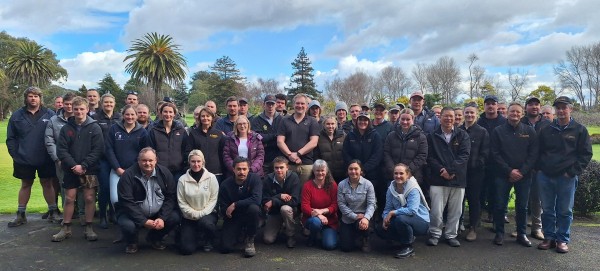
Next Generation Programme 2024 Attendees - Fielding Golf Club
Photo credit: Lynda Gray
The next generation of New Zealand deer farmers gathered 8-9 August in Palmerston North for a two-day conference. The annual event is aimed at preparing the future people of the industry, and while weather tried its best to disrupt proceedings, the two days were a success, covering a diverse mix of subject matter.
"The Next Generation Programme has been going for 12 years now and continues to be a well-attended and popular event in the NZ Deer Farmers Association (NZDFA) calendar. This year was no different,” says DINZ producer manager Lindsay Fung.
“It was great to see a wide mix of attendees. from the Smedley cadets just starting out on their careers in agriculture to university students, as well as farmers new to deer farming and some second or third generation deer farmers looking to get more involved in their family business.”
The first day saw the conference start at the Adlam farm just outside of Shannon, where attendees were first greeted by NZDFA Executive Committee president Mark McCoard. From there, it was up to the deer shed, where BakerAg consultant and NextGen facilitator Matt Carroll introduced attendees to Dwight and Sarah Adlam before Dwight ran through the systems and practices at use on the 188-hectare farm, 160 ha deer-fenced. The Adlams’ focus is on velvet, with 510 velvet stags and another 235 R1 and R2 stags.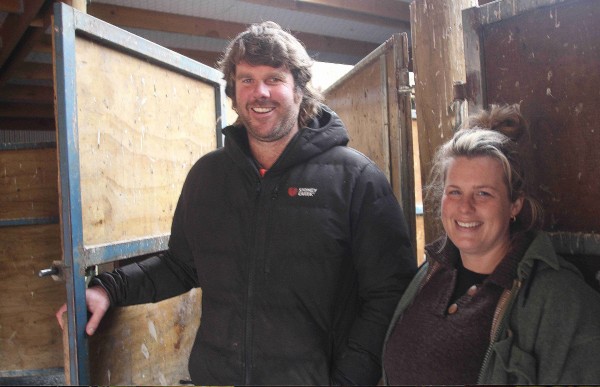
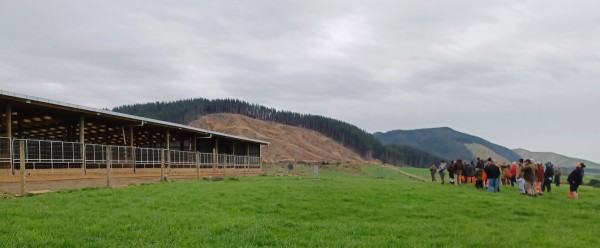
Dwight and Sarah Adlam and their wintering barn
Photo credit: Lynda Gray and Lindsay Fung
Highlights at the Adlam farm included a detailed description and Q&A session on the recently built wintering barn, with capacity of 250 stags off pasture during winter months. While such barns may be more frequent in Southland, for those hailing from outside of the deep south, there was a lot of interest and questions. As the rain began to fall and the barn session ended, the group moved inside the deer shed for a session on ticks in deer, led by retired Hawke’s Bay vet and current deer farmer Richard Hilson.
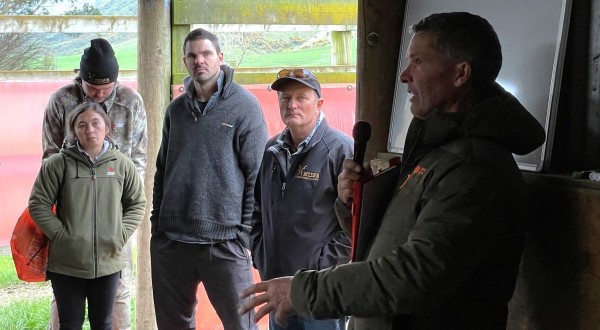
Richard Hilson speaking to attendees
Photo credit: Lynda Gray and Cameron Frecklington
After lunch, it was on to Mike Humphrey’s 270 ha farm (all deer-fenced) just outside of Feilding. Mike was more than happy to share some of the wisdom he has accumulated over the 40-plus years he has farmed deer. He talked about how he has moved more into velvet (1.4 tonne last year) over finishing in recent times, and how he is looking to wind down operations and get some time back for other pursuits in the future. Mike has plans to sell off his hinds next year and lease out the rougher hills for sheep.
The rain restricted access to parts of the farm but a shortened tour went ahead, with Mike leading discussions on animal health, forage, tree planting for carbon credits and more. Mike is a previous Deer Farmer Environmental Award winner (2023) and was happy to discuss his approach to farm management from an environment perspective.
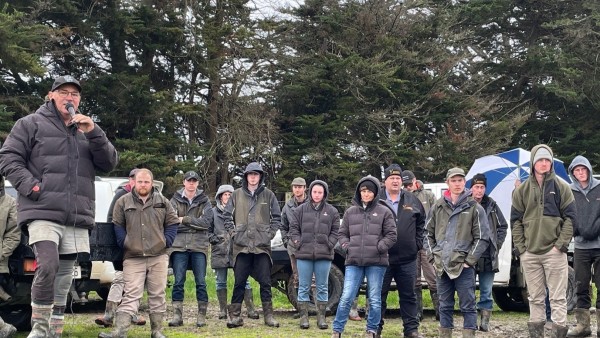
Mike Humphry speaking, Green Hill Farm
Photo credit: Cameron Frecklington
There was a good amount of conversation throughout the day, with a healthy mix of young up-and-comers picking the brains of industry veterans, all there with the desire to see the industry thrive well into the future.
Ben Allen, a 20-year-old currently at Lincoln University, grew up familiar with deer through a family farm near Rotorua, and is keen on making his way into the industry.
“Deer are something a bit different,” says Allen. “You have to be quite personal with them. You can’t be rough and tumble. You have to work with the animal. They pick up on your body language quite easily. They’ll know when you’re grumpy. They operate differently, and you have to adjust. Either you love them or you hate them is the saying.
“But I’m quite keen to go into deer farming. Last summer, I worked on a deer farm, and this summer I’m working on another deer farm. I worked for Jacqueline Rowarth and Ian Scott last summer, and this summer I’m working for Paddy Boyd at Haldon Station, so a couple big names there.”
Day 2 kicked off at Venison Packers Feilding, where Matt Gibson of First Light Foods gave a presentation and subsequent discussion around the venison market segments Frist Light was exploring – the US retail market, NZ elk, chilled venison to Europe, and halal venison for the Middle East – as well as thoughts on prices, both current and future-looking, but also the potential for much greater stability and consistency going forward. Venison Packers Feilding is the only halal licensed venison plant in New Zealand, potentially the entire southern hemisphere.
After that, it was a tour of the processing plant, from where the animals arrive all the way through to the meat ending up in vacuum sealed packaging. A highlight was watching the coordinated efficiency in the boning room, where groups of attendees watched the smooth process from hanging carcass to vacuum-packed select cuts – all in around two minutes per animal – or 28-30 per hour.
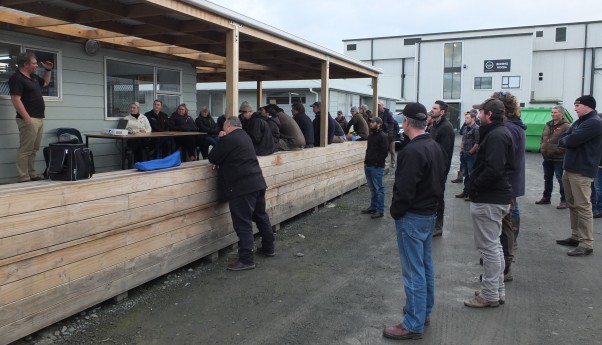
Matt Gibson of First Light speaking during the Venison Packers tour, Fielding
Photo credit: Cameron Frecklington
The final sessions – on the benefits of deer in a multi-species farm and the various pathways into the industry – were led by BakerAg consultant Matt Carroll at the Feilding Golf Club. Matt had the unenviable task of leading a workshop after lunch on the second day, but his sessions were a welcome look at some key areas of farming as a business and ways to enter the industry, including farm succession, equity partnerships, share farming and more.

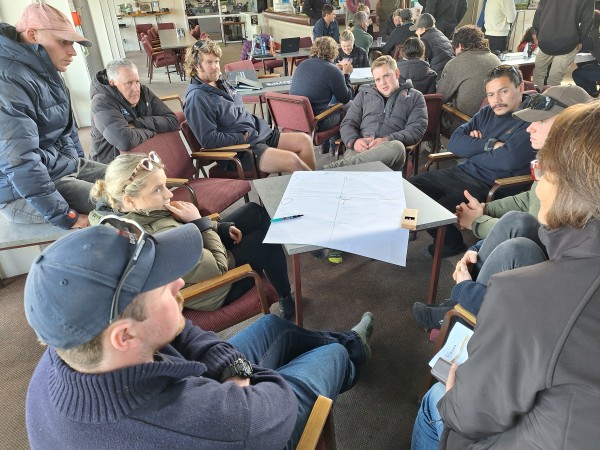
Classroom session facilitated by Matt Carrol of BakerAg
Photo credit: Lynda Gray and Cameron Frecklington
And with that, another year’s Next Generation programme was in the books.
“Hopefully, the attendees gained a lot of knowledge from the event,” says Fung, “but equally importantly, extended their network of connections within the industry.
“This connectivity is our distinguishing strength, and we hope that all the attendees continue their careers within the industry and maintain connections through their local NZDFA branch."

